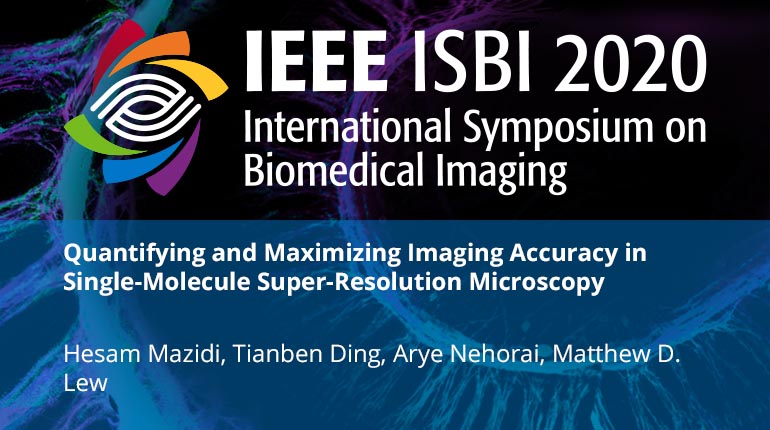
Already purchased this program?
Login to View
This video program is a part of the Premium package:
Quantifying and Maximizing Imaging Accuracy in Single-Molecule Super-Resolution Microscopy
- IEEE MemberUS $11.00
- Society MemberUS $0.00
- IEEE Student MemberUS $11.00
- Non-IEEE MemberUS $15.00
Quantifying and Maximizing Imaging Accuracy in Single-Molecule Super-Resolution Microscopy
Single-molecule localization microscopes (SMLMs) combine the photoswitching capabilities of fluorescent probes with computational image analysis to create images whose resolutions surpass the optical diffraction barrier. However, quantifying the nanoscale accuracy of an SMLM dataset is challenging without knowing the ground truth, which is impractical for scientific discovery. We show that we can robustly quantify the confidence of individual localizations without ground-truth knowledge of the sample by computing measurement stability under a well-chosen computational perturbation. We demonstrate our broadly-applicable method, termed Wasserstein-induced flux (WIF), for quantifying the degree of mismatch between forward imaging models and experimental data. We further show that the estimated confidences can be used to enhance the accuracy and resolution of reconstructed structures experimental 2D and 3D SMLM data.
Single-molecule localization microscopes (SMLMs) combine the photoswitching capabilities of fluorescent probes with computational image analysis to create images whose resolutions surpass the optical diffraction barrier. However, quantifying the nanoscale accuracy of an SMLM dataset is challenging without knowing the ground truth, which is impractical for scientific discovery. We show that we can robustly quantify the confidence of individual localizations without ground-truth knowledge of the sample by computing measurement stability under a well-chosen computational perturbation. We demonstrate our broadly-applicable method, termed Wasserstein-induced flux (WIF), for quantifying the degree of mismatch between forward imaging models and experimental data. We further show that the estimated confidences can be used to enhance the accuracy and resolution of reconstructed structures experimental 2D and 3D SMLM data.
 Cart
Cart Create Account
Create Account Sign In
Sign In





